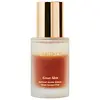What's inside
What's inside
 Key Ingredients
Key Ingredients

 Benefits
Benefits

 Ingredients Side-by-side
Ingredients Side-by-side

Water
Skin ConditioningGlycerin 14.5%
HumectantDiethoxyethyl Succinate
Solvent1,2-Hexanediol
Skin ConditioningPanthenol
Skin ConditioningPolyglutamic Acid
Skin ConditioningPanax Ginseng Root Extract
EmollientSodium PCA
HumectantXylitylglucoside
HumectantAnhydroxylitol
HumectantXylitol
HumectantHydrolyzed Hyaluronic Acid
HumectantArginine
MaskingMethionine
Skin ConditioningCysteine
AntioxidantSodium Hyaluronate
HumectantHyaluronic Acid
HumectantHouttuynia Cordata Extract
Skin ConditioningTremella Fuciformis Extract
HumectantSodium Hyaluronate Crosspolymer
HumectantBeta-Glucan
Skin ConditioningHydrolyzed Sodium Hyaluronate
Skin ConditioningAdansonia Digitata Seed Extract
Skin ConditioningSophora Angustifolia Root Extract
Skin ConditioningMalus Domestica Fruit Extract
AntioxidantPunica Granatum Fruit Extract
AntioxidantPrunus Serotina Fruit Extract
MaskingVaccinium Macrocarpon Fruit Extract
AstringentButylene Glycol
HumectantPortulaca Oleracea Extract
Skin ConditioningCitrullus Lanatus Fruit Extract
Skin ConditioningGardenia Florida Fruit Extract
Skin ConditioningDextrin
AbsorbentDipotassium Glycyrrhizate
HumectantGlucose
HumectantSodium Polyacryloyldimethyl Taurate
Emulsion StabilisingSodium Polyacrylate
AbsorbentAcrylates/C10-30 Alkyl Acrylate Crosspolymer
Emulsion StabilisingPentylene Glycol
Skin ConditioningCarbomer
Emulsion StabilisingEthylhexylglycerin
Skin ConditioningCaprylyl Glycol
EmollientWater, Glycerin 14.5%, Diethoxyethyl Succinate, 1,2-Hexanediol, Panthenol, Polyglutamic Acid, Panax Ginseng Root Extract, Sodium PCA, Xylitylglucoside, Anhydroxylitol, Xylitol, Hydrolyzed Hyaluronic Acid, Arginine, Methionine, Cysteine, Sodium Hyaluronate, Hyaluronic Acid, Houttuynia Cordata Extract, Tremella Fuciformis Extract, Sodium Hyaluronate Crosspolymer, Beta-Glucan, Hydrolyzed Sodium Hyaluronate, Adansonia Digitata Seed Extract, Sophora Angustifolia Root Extract, Malus Domestica Fruit Extract, Punica Granatum Fruit Extract, Prunus Serotina Fruit Extract, Vaccinium Macrocarpon Fruit Extract, Butylene Glycol, Portulaca Oleracea Extract, Citrullus Lanatus Fruit Extract, Gardenia Florida Fruit Extract, Dextrin, Dipotassium Glycyrrhizate, Glucose, Sodium Polyacryloyldimethyl Taurate, Sodium Polyacrylate, Acrylates/C10-30 Alkyl Acrylate Crosspolymer, Pentylene Glycol, Carbomer, Ethylhexylglycerin, Caprylyl Glycol
Water
Skin ConditioningPropanediol
SolventCaprylic/Capric Triglyceride
MaskingIsononyl Isononanoate
Emollient1,2-Hexanediol
Skin ConditioningNiacinamide
SmoothingSodium Hyaluronate
HumectantSodium Hyaluronate Crosspolymer
HumectantHydrolyzed Sodium Hyaluronate
Skin ConditioningSodium Acetylated Hyaluronate
HumectantCoptis Japonica Root Extract
Skin ConditioningTheobroma Cacao Seed Extract
AntioxidantTocopherol
AntioxidantButylene Glycol
HumectantPentylene Glycol
Skin ConditioningEthylhexylglycerin
Skin ConditioningCitric Acid
BufferingSodium Citrate
BufferingDextrin
AbsorbentTrisodium Ethylenediamine Disuccinate
Water, Propanediol, Caprylic/Capric Triglyceride, Isononyl Isononanoate, 1,2-Hexanediol, Niacinamide, Sodium Hyaluronate, Sodium Hyaluronate Crosspolymer, Hydrolyzed Sodium Hyaluronate, Sodium Acetylated Hyaluronate, Coptis Japonica Root Extract, Theobroma Cacao Seed Extract, Tocopherol, Butylene Glycol, Pentylene Glycol, Ethylhexylglycerin, Citric Acid, Sodium Citrate, Dextrin, Trisodium Ethylenediamine Disuccinate
 Reviews
Reviews

Ingredients Explained
These ingredients are found in both products.
Ingredients higher up in an ingredient list are typically present in a larger amount.
1,2-Hexanediol is a synthetic liquid and another multi-functional powerhouse.
It is a:
- Humectant, drawing moisture into the skin
- Emollient, helping to soften skin
- Solvent, dispersing and stabilizing formulas
- Preservative booster, enhancing the antimicrobial activity of other preservatives
Butylene Glycol (or BG) is used within cosmetic products for a few different reasons:
Overall, Butylene Glycol is a safe and well-rounded ingredient that works well with other ingredients.
Though this ingredient works well with most skin types, some people with sensitive skin may experience a reaction such as allergic rashes, closed comedones, or itchiness.
Learn more about Butylene GlycolDextrin is used to thicken a product and helps bind ingredients together. It is created from starch and glycogen.
As an emulsifier, dextrin prevents ingredients from separating. This helps elongate a product's shelf life.
Studies show coating UV filters with dextrin prevents these ingredients from being absorbed. This helps UV ingredients last longer on the skin.
Learn more about DextrinEthylhexylglycerin (we can't pronounce this either) is commonly used as a preservative and skin softener. It is derived from glyceryl.
You might see Ethylhexylglycerin often paired with other preservatives such as phenoxyethanol. Ethylhexylglycerin has been found to increase the effectiveness of these other preservatives.
This ingredient is created by putting sodium hyaluronate through hydrolysis.
You might know this as 'mini' or 'ultra low-molecular weight' hyaluronic acid. The small molecule size means it is able to travel deeper in the skin.
According to studies, low molecular-weight hyaluronic acid can:
One study from 2011 found ultra-low weight HA to show pro-inflammatory properties. Another study from 2022 found it to downregulate UV-B induced inflammation.
Hydrolysis is a process of changing a molecule using water or enzymes.
This ingredient is water-soluble.
Learn more about Hydrolyzed Sodium HyaluronatePentylene glycol is typically used within a product to thicken it. It also adds a smooth, soft, and moisturizing feel to the product. It is naturally found in plants such as sugar beets.
The hydrophilic trait of Pentylene Glycol makes it a humectant. As a humectant, Pentylene Glycol helps draw moisture from the air to your skin. This can help keep your skin hydrated.
This property also makes Pentylene Glycol a great texture enhancer. It can also help thicken or stabilize a product.
Pentylene Glycol also acts as a mild preservative and helps to keep a product microbe-free.
Some people may experience mild eye and skin irritation from Pentylene Glycol. We always recommend speaking with a professional about using this ingredient in your routine.
Pentylene Glycol has a low molecular weight and is part of the 1,2-glycol family.
Learn more about Pentylene GlycolSodium Hyaluronate is hyaluronic acid's salt form. It is commonly derived from the sodium salt of hyaluronic acid.
Like hyaluronic acid, it is great at holding water and acts as a humectant. This makes it a great skin hydrating ingredient.
Sodium Hyaluronate is naturally occurring in our bodies and is mostly found in eye fluid and joints.
These are some other common types of Hyaluronic Acid:
Learn more about Sodium HyaluronateSodium Hyaluronate Crosspolymer is a type of hyaluronic acid. In fact, it is modified version of hyaluronic acid.
The structure of Sodium Hyaluronate Crosspolymer allows it to stay in the skin's top layer for a longer period of time. This allows for even more hydration and humectant action than hyaluronic acid.
These are some other common types of Hyaluronic Acid:
Learn more about Sodium Hyaluronate CrosspolymerWater. It's the most common cosmetic ingredient of all. You'll usually see it at the top of ingredient lists, meaning that it makes up the largest part of the product.
So why is it so popular? Water most often acts as a solvent - this means that it helps dissolve other ingredients into the formulation.
You'll also recognize water as that liquid we all need to stay alive. If you see this, drink a glass of water. Stay hydrated!
Learn more about Water